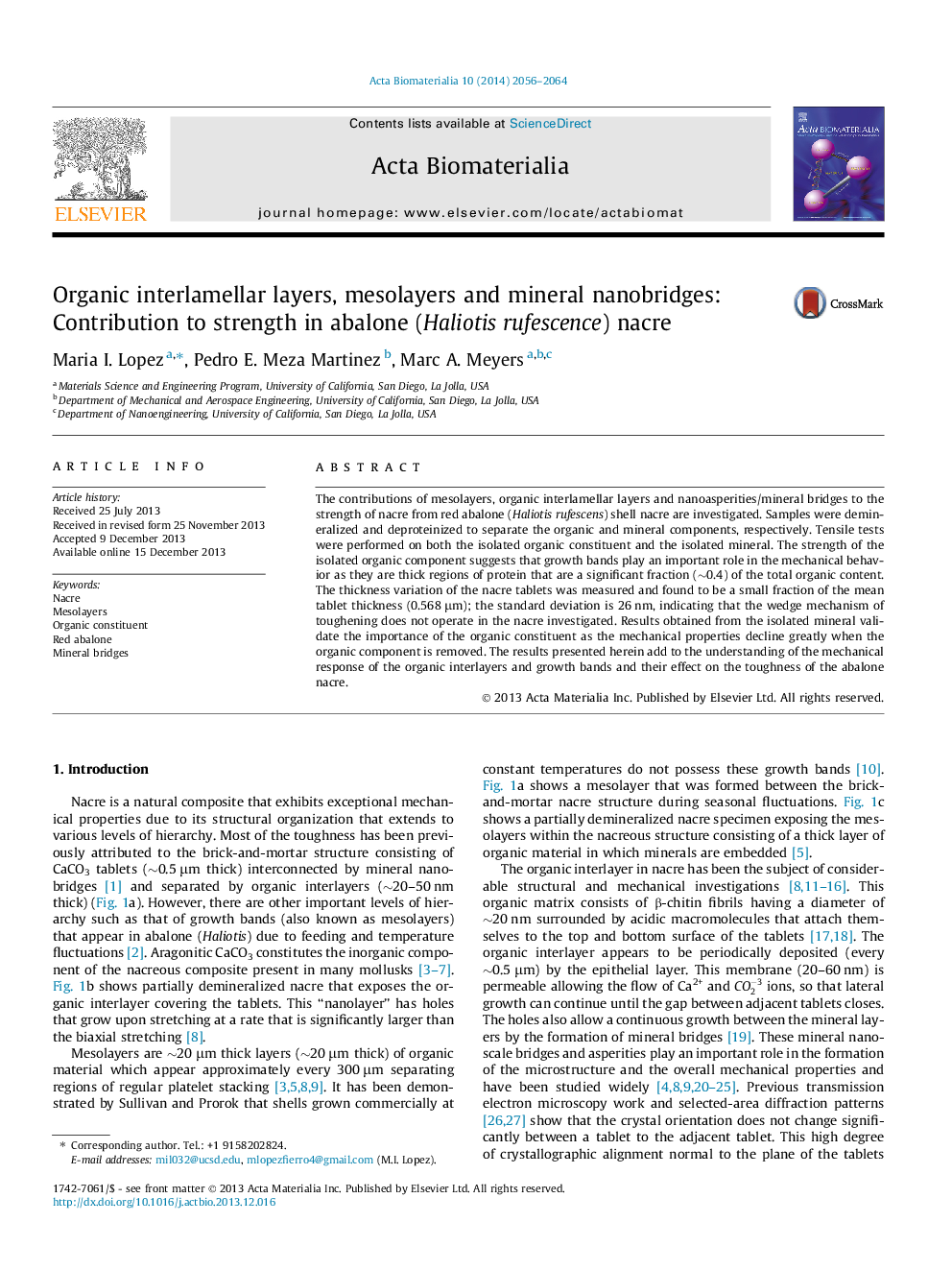| Article ID | Journal | Published Year | Pages | File Type |
|---|---|---|---|---|
| 10159203 | Acta Biomaterialia | 2014 | 9 Pages |
Abstract
The contributions of mesolayers, organic interlamellar layers and nanoasperities/mineral bridges to the strength of nacre from red abalone (Haliotis rufescens) shell nacre are investigated. Samples were demineralized and deproteinized to separate the organic and mineral components, respectively. Tensile tests were performed on both the isolated organic constituent and the isolated mineral. The strength of the isolated organic component suggests that growth bands play an important role in the mechanical behavior as they are thick regions of protein that are a significant fraction (â¼0.4) of the total organic content. The thickness variation of the nacre tablets was measured and found to be a small fraction of the mean tablet thickness (0.568 μm); the standard deviation is 26 nm, indicating that the wedge mechanism of toughening does not operate in the nacre investigated. Results obtained from the isolated mineral validate the importance of the organic constituent as the mechanical properties decline greatly when the organic component is removed. The results presented herein add to the understanding of the mechanical response of the organic interlayers and growth bands and their effect on the toughness of the abalone nacre.
Keywords
Related Topics
Physical Sciences and Engineering
Chemical Engineering
Bioengineering
Authors
Maria I. Lopez, Pedro E. Meza Martinez, Marc A. Meyers,
